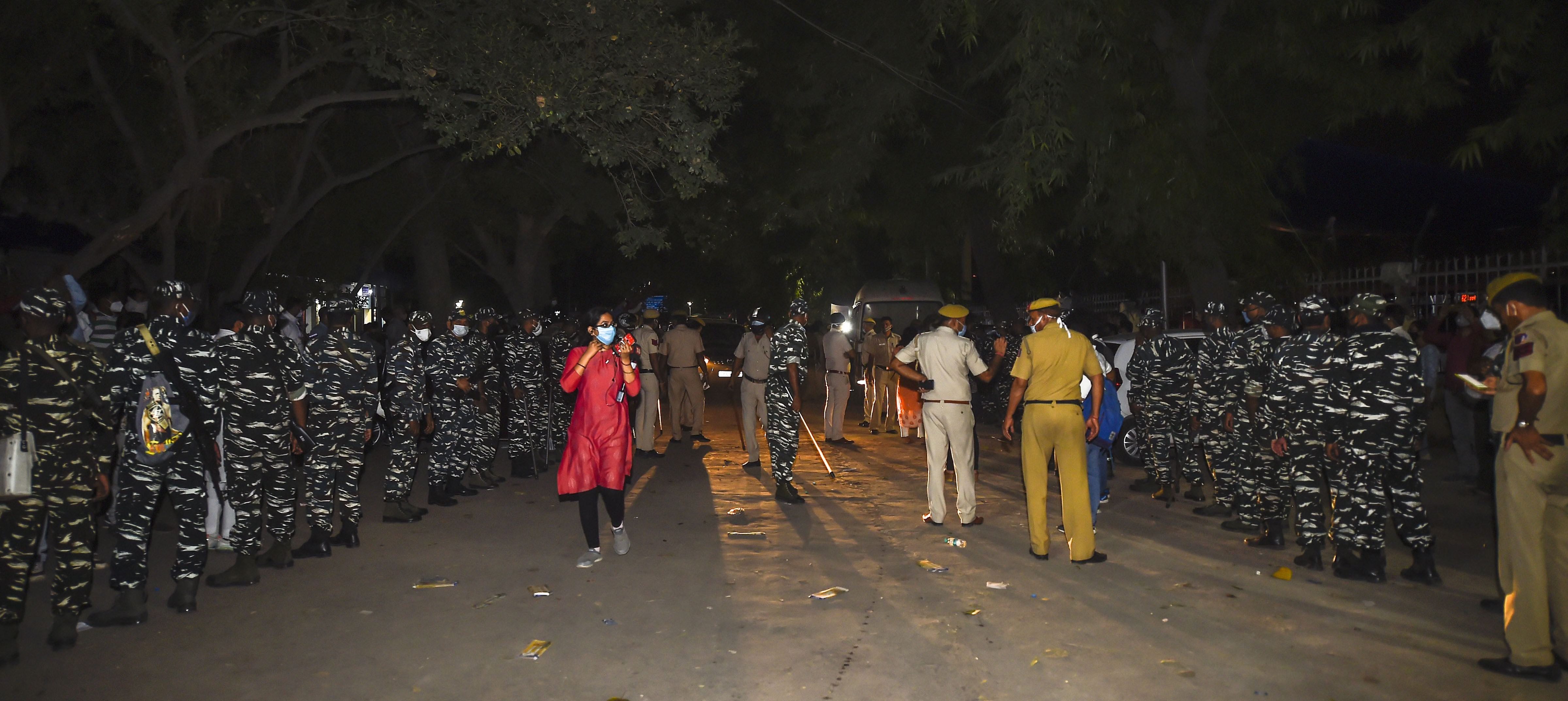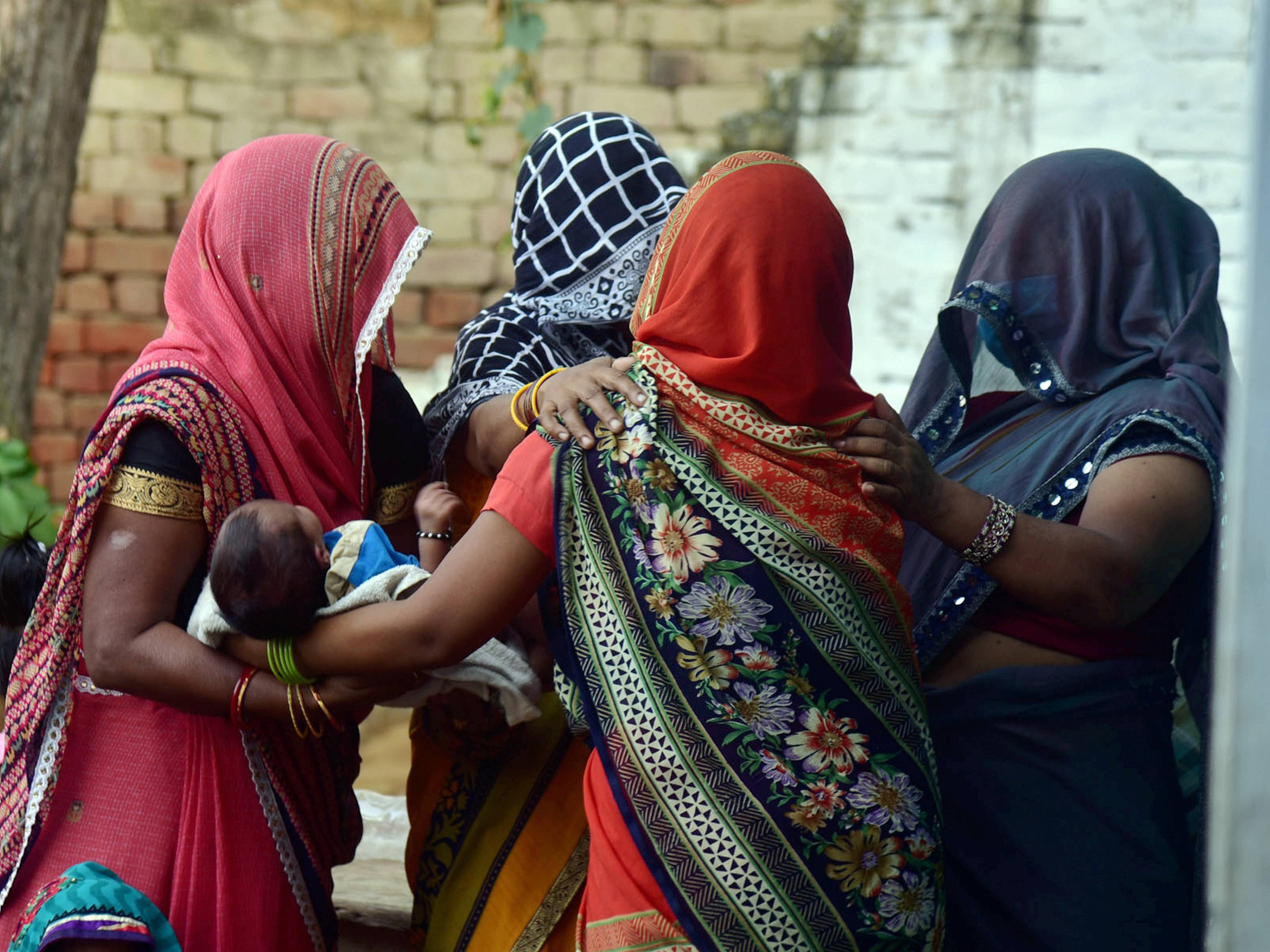Trigger warning: This article contains details of sexual assault and rape.
“Where tradition dries up women like a decadent tree, where they have to spend their whole life, where they have to live under the black shadow of someone else.
In such country women are still slaves.
It is a crime to be born a woman, it is a crime to be born a woman.”
– Hira Bansode
The above snippet from a poem written by the famous Marathi Dalit poet Hira Bansode effectively encapsulates the plight of women in India, which is beleaguered by boundaries of class, ethnicity, wealth and politics. Written over two decades ago, it still stands true in the present social paradigm and reiterates the all-pervasive nature of exploitation and sexual violence women face in India.
India has been no stranger to the sexual violence and discrimination faced by women on a day-to-day basis but the justification given and the invisibilisation of this violence has always revolved around the gender dimension of women and their contradictory position in society (between glorifying the female religious deity and oppressing the female person).
This violence stems from a poisonous culture of machismo which has existed in the country for as long as one can remember and is greatly interlinked with the caste and class of the woman – as the horrifying Hathras gangrape has made clear yet again. There are many who are attempting to de-link the case with caste and make it about just another woman being brutally tormented, yet it seems impossible to truly take away the importance of the politics of intersectionality at play here.
In this case, the young 19-year-old Dalit woman was raped solely because of her caste. The ruthless violence was also initiated because of her caste. Even the recourse which she opted for in the form of a police complaint took 10 days. This was again, mainly because it was against those five accused, who belong to the upper class community of Thakurs.
The way caste permeates our society and unravels the social structure is laid bare by cases like this.

Security personnel outside Safdarjung Hospital as people protest to demand justice for the Hathras gangrape victim, September 29, 2020. Photo: PTI/Kamal Singh
In fact, Indian women are largely identified with their caste over and above their gender, which invariably makes it a reason for their exploitation and suppression. It is notable that India is home to more than 6,000 castes and sub-castes, 3,743 of which are designated “backward” on the grounds of social and educational deprivation. The magnitude of these numbers makes it imperative to acknowledge that these castes have a rigid classification which underpin the Indian social system and spills over to the sexual violence faced by women belonging to these castes.
Upper castes carry forward an old age tradition of having excessive power over Dalits, wherein they are considered to be held in servitude. This notion is often expressed and channelled in the form of sexual violence, rape and other forms of exploitation, so that the contours of classes are marked out and a tangible boundary between them is reinforced.
This is often more explicit in rural India, since it is blatant and direct. In cities, it is clothed and polished – thus, much easier to neglect and unsee. For example – in many parts of rural India, Dalit men and women are not allowed to physically interact with any other class members, are not allowed to use common facilities, are employed to do the dirtiest jobs involving manual labour and can only live in secluded quarters away from others.
The perversity of this discrimination is to an extent that in some villages, Dalits are not allowed to keep male dogs/animals because there is always a chance that the Dalit person’s male dog mates with a non-Dalit’s female dog.
This kind of treatment feeds the structure of Indian society that gives upper castes a deep feudal sense of entitlement, further granting them the impunity to inflict violence on Dalits and other marginalised classes.
§
The Manusmriti says:
‘A woman, at no stage in her life, is fit to be independent – the father should guard her until she is married, the husband during her adult life, and the son in her old age’. (Section I, verse 9.3).
It also says a woman is not liable for punishment if she has sex with a man from the ‘higher caste’, but she is due for harsh punishment for having sex with a man from a ‘lower caste’ (verse 8.365), iterating that she is to be considered as an identity-less being. Even Ramcharitmanas says that a woman is ‘spoilt’ the moment she is given freedom and the texts delineate that as per all the prescribed conditions, the groom’s caste should not be lower than the bride’s caste, otherwise it will be a pratilom vivah (hypergamy), which Hinduism doesn’t permit.
This gives the upper class immunity since challenging or disobeying these caste laws is seen as a ‘violation’ of the holy books (scriptures), and is treated as sacrilege.
§
Rape is often used as a tool by men to assert their dominance on women for various reasons. When coupled with the inherent violent nature of casteism, this need to assert superiority takes on a greater intensity. There are a few reasons for this.
One issue is endogamy and the objectification of women. Endogamy is the custom of marrying only amongst one’s tribe/clam and it does not permit exogamy since the upper class populace of the country considers the law of exogamy as a positive injunction. Indian society savours the clan system, even though there are no clans; and this can be easily seen from the law of matrimony which centres around the principle of exogamy – for it is not that sa-pindas (blood kin) cannot marry, but a marriage even between sa-gotras (descendants of the same maharishi) is regarded as a sacrilege.
The upper caste man, and more specifically the woman, is restricted to marry someone from the lower classes and stake her claim to choice since that is considered as a sin by her family because it reduces their ‘caste numbers’. Even if that marriage concludes, the participants (lower caste participant) is subjected to brutal torture/rape/exploitation. This is often directed at women because many men fail to accept the fact that an adult woman has the liberty to love and marry as per her own free will. It does not matter that India’s constitution gives the right to every adult, irrespective of gender and caste, to choose his/her partner since it is still considered a immoral by the social courts.
This concept of endogamy was first articulated by B.R. Ambedkar has been interpreted in various ways since. In one of his papers, sociology professor Satish Deshpande had quoted that endogamy is seen as a “means of controlling the sexuality and labour of women”.
This is true since endogamy is a pivot of reproduction of caste and subsequently proliferates the inequality between castes. When an upper class woman marries of her own volition, she becomes an atom bomb in the Hindu family. She stakes her claim to reproduce and can increase the numbers of the lower class of the man she marries. This induces fear in her family since she is essentially in the custody of her closest male relative and is supposed to be docile/choice-less and upon marriage relinquish her father’s caste and incorporate her husband’s.
Also read: Musings on Art, Caste and Rape in Churu, Rajasthan
Another essential factor which contributes to the number of rapes is that men find it unacceptable when women express a choice of their own or are economically independent. In the case of Dalit women, many are the primary bread earners in the family which requires them to step out of their houses and engage in unconventional labour work to earn. Their jobs require them to be aggressive, which is drastically different to the roles of upper caste women – who are perceived to be delicate and fit to only be mothers/caretakers.
This distinction in roles is deemed to be an ‘invitation’ to upper caste men to violate the Dalit woman since they voluntarily step out of their houses, disregarding the customs, despite their need.
The infamous cases of Soni Sori and Bhanwari Devi are classic examples of this mindset. Soni Sori was a young tribal teacher who was arrested on charges of being a courier between Maoists and the Essar group. As she was arrested she was subjected to brutal gangrapes by upper caste police officers in custody, which became more aggressive after she refused to accept the charges levied against her. The perpetrators were unable to digest the independent nature of a woman and her capacity to employ her own will.
Even in 1992, Bhanwari Devi was raped because she had the ‘audacity’ to stand up against child marriage. She was a working woman who worked as a ‘sathin’ for the state government’s ‘Women Development Project’ and was so raped by upper-caste men of the village.
§
The Indian social structure also entrenches the idea that a woman is a man’s property and a depiction of his honour. As far as society is concerned, it is seen that if a woman’s choices are against her husband’s/father’s, she needs to be silenced since she has the power to bring them ridicule and humiliation.
Often as a corollary, lower caste women are brutally raped, violated and beaten as a means of awarding punishment to her male relatives for something they may have done. They are taught a lesson for crossing caste boundaries by violating ‘their’ women and blotching their honour to ensure that they do not cause any further trouble.
An apt instance of this is the infamous Khairlanji massacre, the anniversary of which just passed this September on 29th . In 2006, in Khairlanji in Maharashtra, members of a Dalit family were tortured and beaten to death by men of the dominant Kunbi and Kalar caste. This was because the Dalit (Bhotmange) family was prosperous and had previously helped a Dalit man escape violence which was being perpetrated by upper caste men.
To teach them a lesson, the mother, her daughter, and her two sons were dragged out of their house. The four were stripped and paraded naked. One of the sons was asked to have sex with his sister and was beaten to death when he refused. The perpetrators mutilated their private parts, gangraped the women. It was also reported that the men continued to rape their dead bodies long after they had died.
Every year on September 29, Dalit-Buddhist organisations light candles on the spot where Bhaiyyalal Bhotmange once lived with his wife Surekha, 45, sons Sudhir and Roshan, 21 and 19, and daughter Priyanka, 17.
This massacre, however, is only one instance among thousands of others which the Dalit community has endured. In most of these instances, it can be seen how Dalit women face the maximum punishment, and are triply oppressed in terms of caste, class and gender.
It is heart wrenching to observe how the Dalit woman is forced to endure the poisonous mindset of the dominant caste man, where her birth itself denominates if an upper caste man will believe if her sexuality can be easily ‘bartered’ and ‘appropriated’. There are constant references made to the woman’s ‘availability’, rendering her a passive object that can be easily acted upon.
The time for equality and change is upon us. But most importantly, it is time for a structural overhaul to address the social ills that have plagued us for centuries.
Anika Kumar is an undergraduate law student at Jindal Global Law School.
Featured image: Family members of the Hathras gangrape victim mourn her death, September 29, 2020. Photo: PTI

